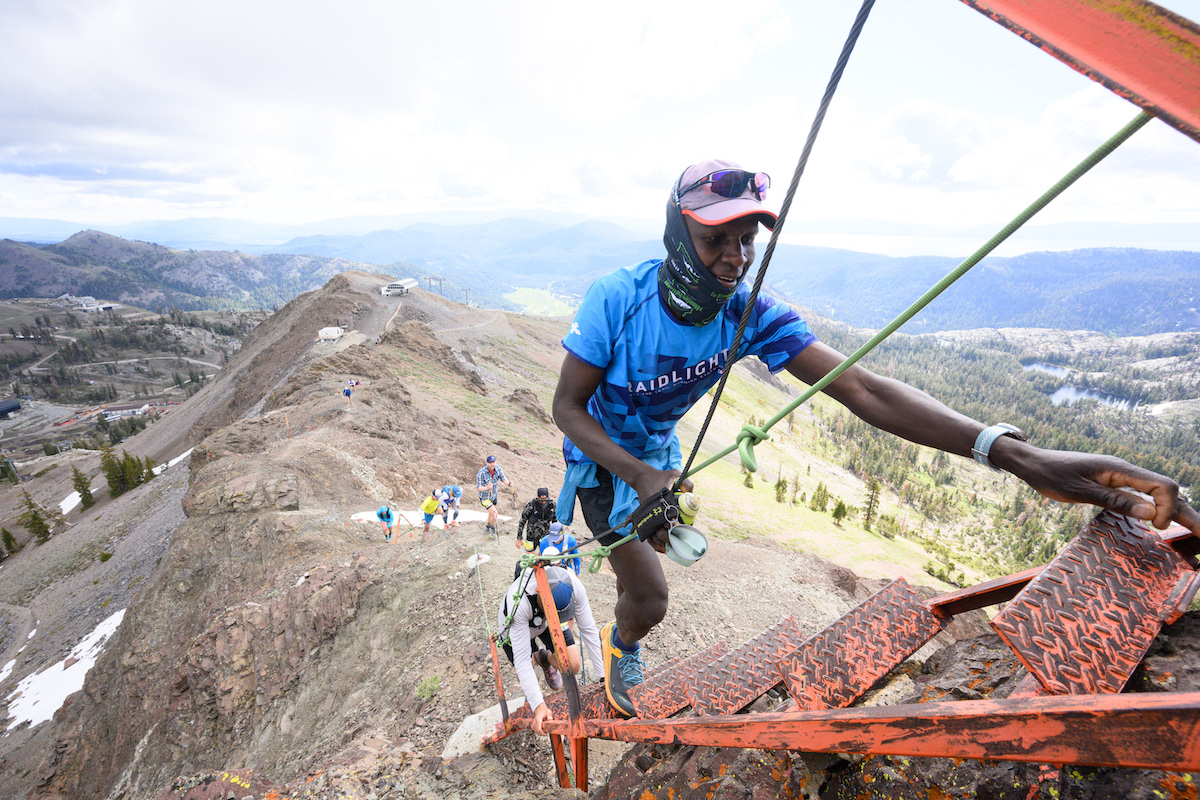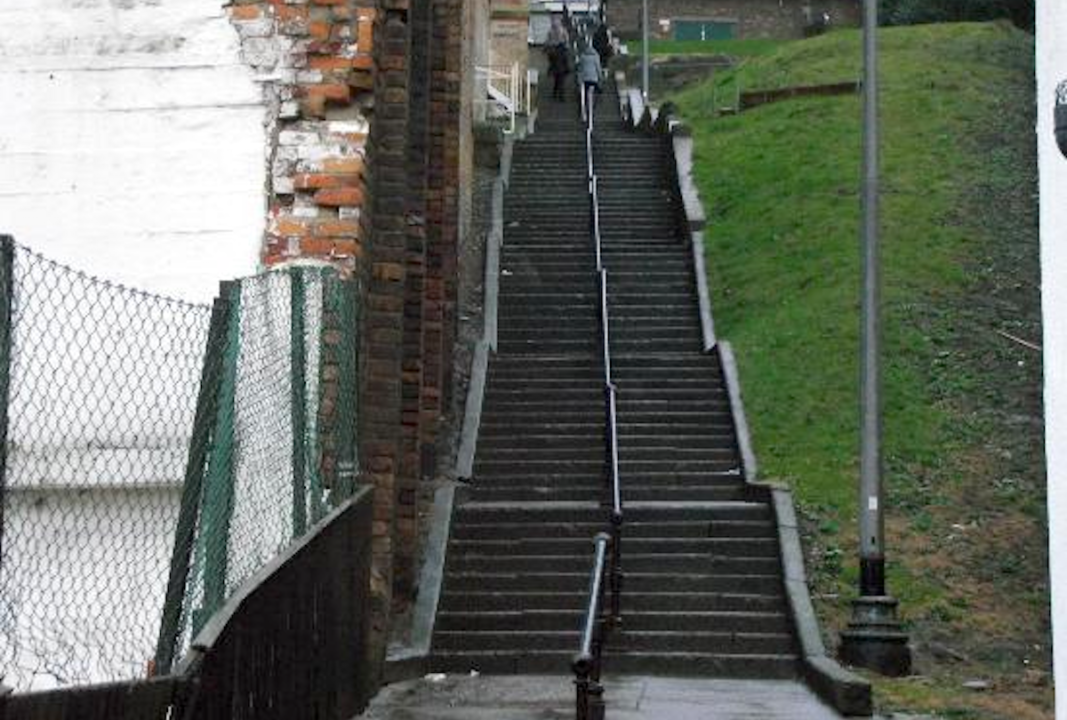
Dr. Matt Long talks us though another training and life lesson, this time looking back to a well spent youth running up stairs and how as an adult a wise head beat youthful enthusiasm.
It was the summer of 1985 and my childhood hero Steve Cram was hopping all over Europe setting world records in Nice, Oslo and Budapest. Everyone, myself included, was truly inspired and wanted to run all day and then some more.
Towards the end of a summer track season, my parents took my brother and I to an August holiday in Scarborough. As the son of a working class lorry driver and a hairdresser, I recall it being a treat to be able to afford a holiday and to get to stay in the ‘posh’ old Grand Hotel.
Steps
Whilst away for the week, naturally I wanted to keep my running up and would awake early for my daily trot along the sea front, straying out on to the beach so that I could feel the waves rolling in and over my feet as I navigated the sand.
Upon heading back to the hotel I caught my father who was up and about searching for a newsagent to buy his daily paper to keep abreast of the football fixtures being listen for the forthcoming season. He was sat at the bottom of 153 steps which I had to ascend from the promenade to get back up to the hotel entrance.
As I nodded and sped past him, keen to impress, he shouted at me, “Don’t try and run all the way up, you’ll never make it!”. About half-way up, exhausted and a tad embarrassed I stopped my ascent and turned round, hands on knees to call back down to him, “Guess you were right Dad. I give up!”. I tried every single day of the seven that we were on vacation and failed every time, being forced to stop in my tracks however tantalisingly close the summit seemed.

Reaching the Peak
I made the trip back to Scarborough last summer and had a wry smile 37 years later as I took those very same steps I had tried to climb almost four decades ago. “I’m going to have a crack at running up one more time!” I said like an excited kid to my partner Tina, who held my ice cream as I steadied myself, rolling her eyes and winking at her boys in the process.
Less than 3 minutes later I stood at the top of the 153 steps having run each and every single one of them and I turned round in Rocky Balboa pose, arms aloft, to face my family who were gawping up from the promenade at me. “I finally did it at the age of 50!”, I yelled triumphantly.
Levelling Off
The reason I had succeeded as an overweight recreational runner, now turned coach, where I had failed as a club and county level 14 year old was because age had given me the wisdom to realise that every 10 consecutive steps, there was a 10 metre section levelled off on the flat where one could recover before climbing once again.
Where I had tried to run from bottom to top of the flight of stairs all those years ago I now had the maturity and experience to realise that I could run all the steps but needed to walk the flat levelled off bits for just a few seconds before running in my ascent once again.
When I had regained my control of my breathing and finished off my ice cream, this got me thinking as a coach about what we call ‘deloading’.
De-loading
As athletes, we all want to constantly overload our system. We intuitively know that we must do more volume and / or intensity as runners in order to improve. After all Peter Coe, in guiding his son Sebastian to two Olympic 1500 gold medals once famously said. “Athletes that train then same, stay the same!”.
Many of you will be smart enough to realise that constant overload runs the risk of you going stale, panicking and then pushing even harder due to loss of form thus inevitably resulting in injury. So we know that overload must be prefixed by the term ‘progressive’.
Progressive Overload
Many endurance based athletes are aware of certain unwritten ‘rules’ of progressive overload. For example you will know not to suddenly increase your mileage from say 40 mph to say 60 mpw because that’s unfaithful to the principle of progressive overload. You will have a percentage increase week by week in mind which you feel is a ‘safe’ way to ramp up your mileage.
The above being said, as I coach I notice what is far more difficult to inculcate amongst athletes is an understanding of the need to ‘deload’ every few weeks. Yes some athletes will have a regeneration period consisting of days or short weeks off after a cross country season or track season but many are reluctant to deload periodically, regularly and routinely.
If this is you, then you are risking making the very same mistake I made as a 14 year old trying to run up those steps in Scarborough, to further the analogy!
Even just a few easy days
By taking a period of a few short days deloading every few weeks after a block or training or a hard race, not only are you minimising the chance of injury on a risk-reward basis but critically you are also allowing the training effect to take place so that supercompensation occurs and you get fitter.
I had a text message from a Team GB and England masters athlete recently which read ‘PB in the half marathon last Sunday. Legs feel great, I’m out to smash a club interval session tonight’.
This was just two days after her considerable success. I had to say to this athlete that there is a difference between what she felt she could do on the one hand because she was on an understandable psychological ‘high’ and what she should do on the other. In so doing I returned to those very same Scarborough steps and told her the story of the reason for my ascent, 37 years after I had originally failed.
This leaves us with the following questions for self-reflection:
- What do I understand by the term ‘progressive overload’?
- How can ‘deloading’ be built regularly and routinely into my training programme?
- When am I in danger of running a frequency, intensity and volume of work which I can do but shouldn’t necessarily do for the benefit of my long term athletic development?
Matt Long has served both as a Great Britain Masters Team Manager and England Team Coach and welcomes contact through mattlongcoach@gmail.com



















